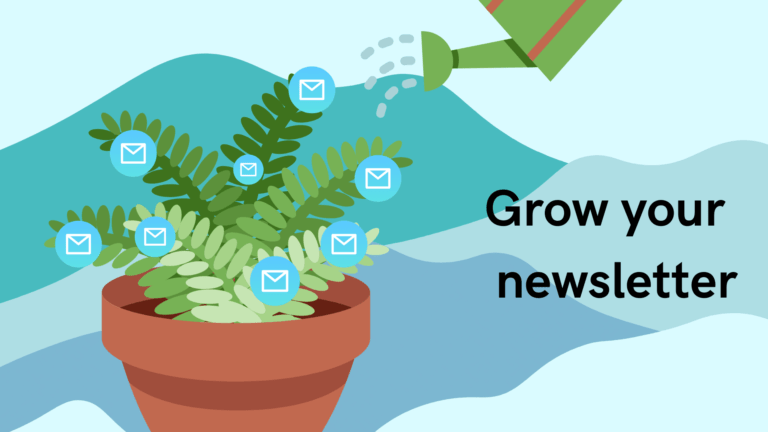How to Grow Your Email Marketing With Ease

by Joelle Adeleke
In the age of social media, newsletters may be easy to overlook. But they can also be a more self-sufficient method of getting information to your audience, especially if you have been struggling with mastering social media algorithms.
According to Hubspot, 33% of marketers send weekly emails and 26% of marketers send emails multiple times per month.
Newsletters can bridge the gap between you and your customers. They give them a better understanding of you, your business, and your products. A newsletter can increase website engagement and create a more personal connection.
However, building and creating a newsletter is harder than it seems. You can not deny that we have all ignored a “subscribe to our newsletter!” pop up before.
On top of that, getting people to join the newsletter is one challenge, while getting them to actually open up those emails is a whole other battle.
And while email marketing is not the same as social media marketing, you are still competing for your followers’ attention—people’s inboxes (and spam folders!) are swamped with emails all the time. After all, 64.1% of small businesses use email marketing. So, how do you make it work?
Why are newsletters important?
Newsletters are a cost-effective way to increase engagement. Newsletters can also bring your brand to life. They can generate a sense of brand awareness by keeping you at the top of customers’ minds. They can also increase brand loyalty and sales.
Automated newsletters can also act as an automatic sales funnel. Setting up sequences of automated emails to go out to all new newsletter subscribers saves you time and can make you money.
With newsletters, you can give customers a behind the scenes peek, or just provide them with some other information that they might want to know.
Before even collecting email addresses, though, you should have a goal in mind. Do you want to sell your product? Or start a conversation? Consider using the S.M.A.R.T. goals method.
Additionally, review your strategy. How often do you want to send emails? What automated email sequences do you want to set up? How will you promote your newsletter?
How do you build your email list?
People subscribe to newsletters for information, so find ways to provide customers or potential customers with valuable information. Not every email has to be directly selling your product or service. Make sure to send emails that provide subscribers with useful information that they’re interested in having. This can include exclusive content, such as exclusive deals or previews on upcoming events or products.
You can use Shopify (which you can use to create your website as well), Canva, Flodesk, and Substack, and Mailchimp to design and send your emails.
How do you get engagement?
Do not expect all subscribers to open your email—people get a huge influx of emails every day. (How many emails sit untouched in your personal email inbox?)
One key point is creating the right title for the email. Do you want it to sound familiar, like a friend saying hello? Include the deal offer right in the header? Ask a provocative question? There are a lot of options, but generally the title and preview text of the email are the most important. Make sure to send test emails to yourself to see how the email will appear when it’s sent out.
Also, make sure to greet the receiver by name.
How often should you send emails?
Consistency is key in your email marketing campaigns. Create both a strategy and a goal for your newsletter. A part of your strategy should include how often you’re sending emails. You do not have to send an email every day.
The frequency typically depends on your industry. Depending on the size of your business, it might not be practical to send emails six days a week. A good start can be emails a month, and then increasing your frequency to once a week to see how click-to-open and click-through rates change. From there, you can continue to evaluate what frequency works best for your business.
Newsletter ideas
Even as you consider how often to send an email, you still might not know what to even put in your newsletter. Here are a few places to start.
Welcome emails
Behind the scenes
Guest speakers
Tips and advice regarding your products
Seasonal sales/coupons
Giveaways
Fun facts
True/false
Send holiday greetings
Customer testimonials
Good luck!
Email marketing is not easy, but overall, it can greatly improve your marketing, brand loyalty, and sales. As you move forward in your email marketing endeavors, make sure to remember these tips!
